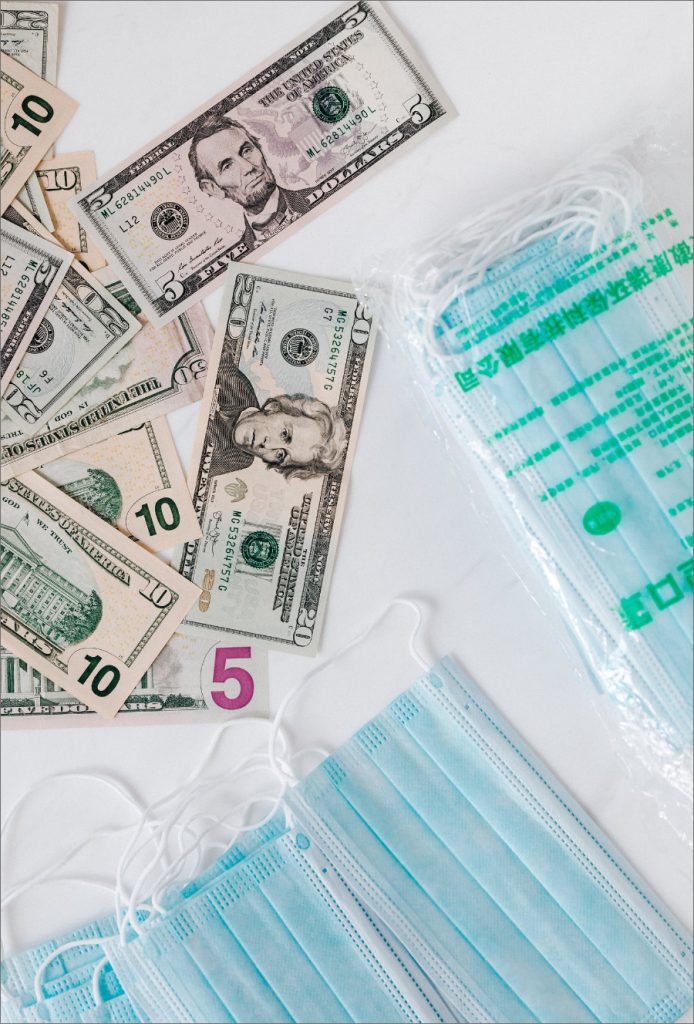
COVID-19 has introduced new costs for plan sponsors. Some of these costs are known. For instance, approximately 15% of people who become infected with the Coronavirus may require hospitalization. The Commonwealth Fund estimated that by October 31, 2020, the U.S. will spend approximately $24 billion on inpatient COVID-19 care; 0.6% of all projected 2019 national health outlays. Costs will vary from state to state depending on the rate of infection and hospitalizations. Based on findings of new epidemiological projections from the Institute for Health Metrics and Evaluation, since public insurance payment rates are considerably lower than private payer rates, hospitals in states that incurred the initial COVID-19 surges are expected to have received lower reimbursements than those in areas with higher populations of younger and more affluent residents. The cost factors for hospitalization and treatments depend on how severe a patient’s case is and the insurance payer.
As a point for comparison, in 2018, the estimated costs associated with patients, who are insured through a large employer’s private health plan and hospitalized for pneumonia, averaged between $9,763 to $20,292, influenced by the severity of their pneumonia and any comorbidities they had according to data from Peterson-KFF’s Health System Tracker.
COVID-19 Costs for Patients of Different Ages
Fast forward to 2020 and we learn from a FAIR Health study that the median cost for people ages 51 to 60 without insurance or who went out-of-network for COVID-19 inpatient care, was $45,683. Those ages 23 to 30 incurred a cost of $34,662. When considering private insurance claims, the highest average amount paid to the provider was $24,012 for patients ages 51 to 60 and the lowest average amount paid to the provider was $17,094 for patients over age 70.
Comorbidities in Hospitalized COVID-19 Patients
Comorbidities were a significant cost impact. These conditions include: kidney failure, a condition had by 13% of hospitalized COVID-19 patients; Type 2 diabetes, had by 10% of hospitalized patients; and hypertension, a condition had by 7% of the hospitalized patients.
Treating and Testing COVID-19 Patients
The organization, Covered California, was the first to publish national estimates of the costs associated with testing for and treating of COVID-19. It estimated costs of between $34 to $251 billion for commercial insurers, excluding people covered by a Medicare Advantage plan or a Medicaid Managed Care plan. In another projection, America’s Health Insurance Plans (AHIP), working with the consulting actuarial and healthcare firm of Wakely, projected baseline estimates, based on a 20% infection rate, of $84 to $139 billion in 2020 and $28 to $46 billion in 2021 to private insurers, inclusive of commercial insurers, Medicaid MCOs and Medicare Advantage plans, for the direct cost of COVID-19 testing and treatment. Applying different infection rates would increase these projected costs over a two-year period to $56 to $556 billion.
A Seattle COVID-19 Survivor’s $1.1 Million Hospital Bill
One COVID-19 survivor’s hospital bill probably conveys just how costly treating this virus can be. It has been previously documented that a 70-year old Seattle resident spent the months of March and April in the hospital, with over a month of that time spent in the Intensive Care Unit (ICU). At the end of his hospitalization, he received a bill of $1,122,501.04 million dollars; which included:
- Approximately 3,000 itemized charges, averaging an estimated 50 charges per day
- 42-day ICU stay at a total cost of $408,912 (i.e., $9,736/day) His ICU room required sealing and access only by medical staff equipped in personal protection equipment of plastic suits and headgear; which cost $9,736
- 29-days on a ventilator at a cost of $82,215 (i.e., $2,835/day)
- Additional itemized costs totaling $491,127
Approximately 25% of the total bill was associated with various drugs the patient received while hospitalized.
The long-term cost impacts remain unknown. Only time will reveal what the actual costs of COVID-19 will be to all parties on the healthcare continuum. What is known is that prudent measures for controlling the spread of the virus, along with providing the best level of evidence-based clinical inpatient and post-discharge care management, is essential.


